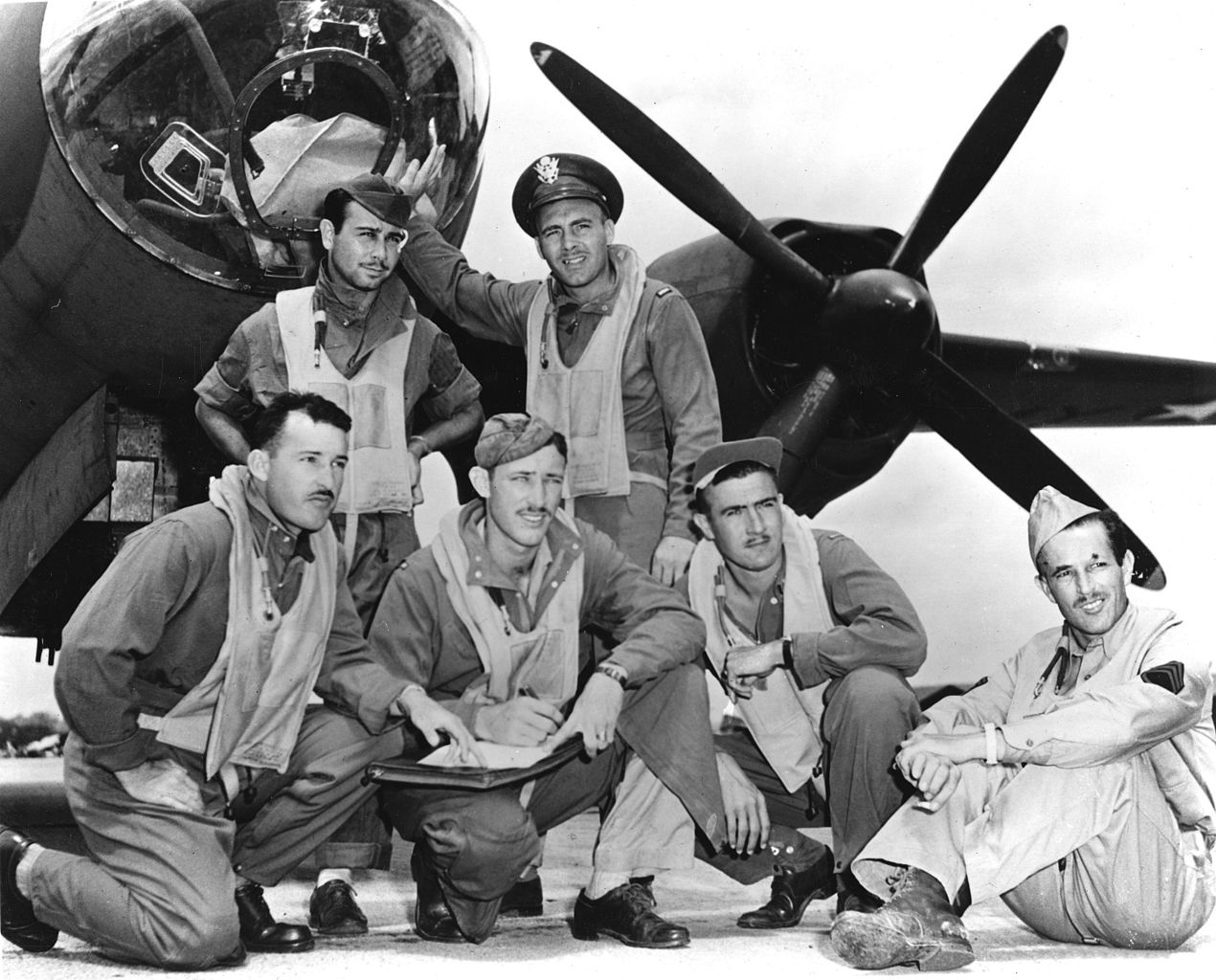Muri’s bomber was hit, injuring three crew members, but he continued on, firing a torpedo onto the aircraft carrier Akagi before trying to flee the barrage of fire unleashed by the enemy surface fleet and swarming Zero fighters
At 7:10 in the morning on June 4, 1942, 150 miles from Midway Atoll… The B-26 Marauder “Susie-Q” thunders down the carrier’s flight deck after launching a torpedo at the Japanese carrier Akagi, narrowly missing the bridge. Lt. James P. Muri, a member of the 22nd Bomb Group of the Army Air Force, piloted one of the four B-26 bombers that departed from Midway Island on that day in order to engage a Japanese fleet preparing to invade the American outpost roughly 1,100 miles northwest of Hawaii.
Japanese fighter aircraft fired machine guns and cannons at the bombers. Although Muri’s bomber was hit and three crew members were hurt, he still launched a torpedo at the aircraft carrier Akagi and then, as depicted in the stunning illustration (titled “A Shot Across the Bow” and created by aviation artist Roy Grinnell) in this article, he attempted to flee the hail of shots fired by the enemy surface fleet and swarming Zero fighters by flying his craft across the ship.
Fox News reported that Muri believed that skimming the flight deck would give him the best chance of surviving, so he flew lower than treetop level above the deck of the huge ship. More than 500 bullet holes were found in the bomber when the jet made a crash landing on Midway Island, according to reports in the Billings Gazette.
The stunning American victory at the Battle of Midway was made possible by the dramatic torpedo attack by Army B-26 Marauders of the 22nd and 38th Bomb Groups and the Navy TBF Avengers of Torpedo Squadron 8. This action forced Japanese Admiral Nagumo to change his battle strategy.
The Distinguished Service Cross was given to Muri and his crew, and singer and radio host Lonnie Bell honored the achievement in his 1976 song “Midway.” At a ceremony in Washington, D.C., Muri was presented with the Jimmy Doolittle Award in 2003 for his exceptional service to the U.S. Army Air Corps. On February 3, 2013, Muri passed away. He had buzzed the flight deck of the Japanese aircraft carrier Akagi to save his crew and crippled B-26 bomber.
Muri retired from the military in 1959 and came home to Montana in 1969. Before relocating to Billings in 1999, he and his wife, Alice, lived on Bridger Creek east of Big Timber for 30 years. In 2001, he lost his wife. Muri piloted the Martin B-26 Marauder, a twin-engine light bomber that was first used by the U.S. Army Air Forces in 1941, during his valiant mission.
In the spring of 1942, the B-26 started flying combat missions over the Southwest Pacific, although most of them were later sent to Europe and the Mediterranean. The Marauder, an Allied bomber that operated at middle altitudes of 10,000 to 15,000 feet, had the lowest loss rate of any Allied bomber at less than 0.5 percent. Aircrews from the United States, Britain, Free France, Australia, South Africa, and Canada all piloted the B-26 during battle. B-26 crews flew more than 110,000 missions and dropped 150,000 tons of bombs by the conclusion of World War II. 5,266 B-26s had been produced by the time it was stopped in 1945.
Prints of this painting, and other fine military artworks and collectibles, can be viewed online and purchased at the Valor Studios website.

Photo by U.S. Air Force

